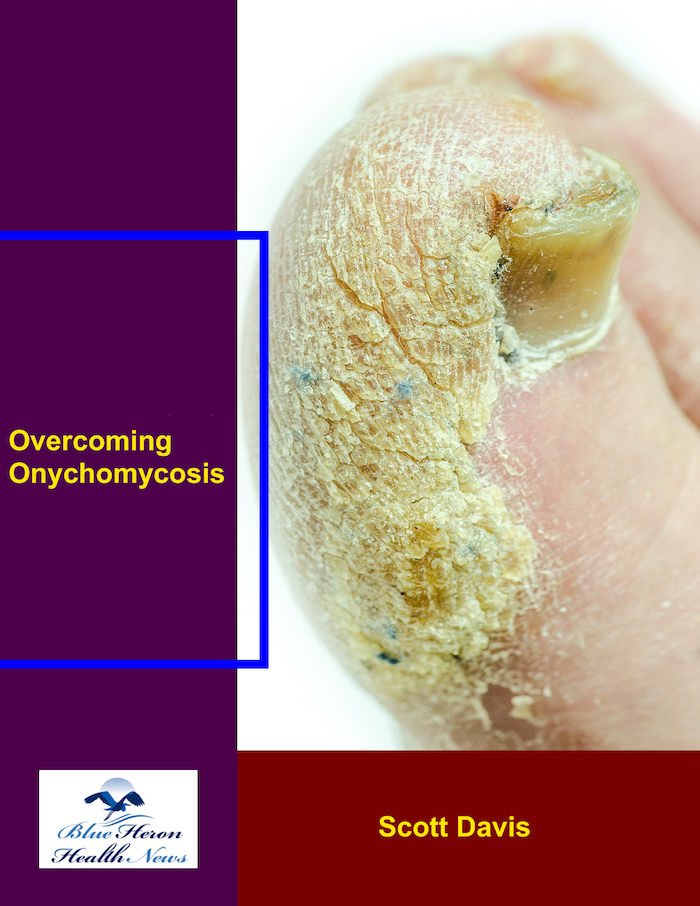
Overcoming Onychomycosis™ By Scott Davis If you want a natural and proven solution for onychomycosis, you should not look beyond Overcoming Onychomycosis. It is easy to follow and safe as well. You will not have to take drugs and chemicals. Yes, you will have to choose healthy foods to treat your nail fungus. You can notice the difference within a few days. Gradually, your nails will look and feel different. Also, you will not experience the same condition again!
What is the connection between diabetes and onychomycosis?
There is a strong connection between diabetes and an increased risk of developing onychomycosis (fungal nail infections). Diabetes, particularly type 2 diabetes, contributes to the development of onychomycosis in several ways, often due to factors such as poor circulation, high blood sugar, and compromised immune function. Here’s how diabetes is related to onychomycosis:
1. Poor Circulation (Peripheral Vascular Disease):
- Diabetes can cause damage to the blood vessels, leading to poor circulation, especially in the feet and lower extremities. This condition is known as peripheral vascular disease (PVD). Poor circulation reduces the ability of immune cells and nutrients to reach the tissues of the feet, including the nails. As a result, the body’s ability to fight off fungal infections is compromised, making it easier for fungal spores to infect the nails and surrounding skin.
- In individuals with poor circulation, the wounds and cuts on the feet (such as those around the nails or between the toes) heal more slowly, creating an ideal environment for fungi to thrive.
2. Increased Blood Sugar (Hyperglycemia):
- High blood sugar levels create a favorable environment for fungal infections to develop. Elevated blood glucose can impair the body’s immune response and increase the availability of glucose to fungi, which feeds on sugar and thrives in high-glucose environments.
- Diabetes-related hyperglycemia also increases the risk of skin and nail infections, including onychomycosis, as high glucose levels impair the skin’s barrier function and make it more susceptible to fungal infections.
3. Weakened Immune System:
- People with diabetes often have a weakened immune system, which makes it more difficult for the body to fight off infections, including fungal ones. High blood sugar levels can impair the function of white blood cells, which are essential for identifying and combating infections.
- The immune system’s inability to properly respond to fungal invaders in the nails and surrounding tissues increases the risk of developing onychomycosis.
4. Peripheral Neuropathy:
- Peripheral neuropathy (nerve damage) is a common complication of diabetes. It often affects the feet, causing numbness, tingling, and loss of sensation. When diabetic patients lose feeling in their feet, they may not notice cuts, blisters, or other small injuries around the nails that can serve as entry points for fungal infections.
- Neuropathy may also cause people to neglect foot care, which can further increase the risk of fungal infections. For example, if a person with diabetes does not properly clean, trim, or moisturize their nails, it creates an environment where fungi can thrive.
5. Excessive Sweating and Moisture:
- Diabetes can lead to excessive sweating in the feet (called hyperhidrosis), creating a moist environment that is ideal for the growth of fungi. Fungi that cause onychomycosis, such as dermatophytes, thrive in moist, warm environments.
- If feet are not properly dried, fungi can penetrate the nails, especially if the person wears tight or non-breathable shoes that trap moisture and heat.
6. Foot Deformities and Toenail Damage:
- Diabetes can cause foot deformities like bunions, hammer toes, or calluses, which can lead to nail trauma. Damaged or injured nails are more susceptible to fungal infection, as fungi can invade through broken skin or damaged nails.
- People with diabetes are also at risk of developing ingrown toenails or thickened nails, which can create a breeding ground for fungi.
7. Slower Healing of Injuries:
- Slow wound healing is another common complication of diabetes. When nails or skin around the nails become injured (such as from cuts, abrasions, or poor nail trimming), these wounds heal more slowly in individuals with diabetes. This creates an opening for fungi to enter and cause an infection.
8. High Risk in Older Diabetic Patients:
- Older individuals with diabetes are at even greater risk of developing onychomycosis. Aging itself contributes to changes in the skin and nails, such as thinning of the skin and nail growth slowing down. The combination of age-related changes and diabetes-related complications, like poor circulation and neuropathy, further increases the risk of fungal infections in the nails.
9. Secondary Infections:
- Fungal infections can sometimes lead to secondary bacterial infections, which can complicate the condition, especially in people with diabetes who are already prone to infections. The presence of both fungal and bacterial infections in the nails and skin can delay healing and lead to more severe outcomes, including nail loss or chronic infections.
Conclusion:
Diabetes significantly increases the risk of developing onychomycosis due to several factors, including poor circulation, hyperglycemia, weakened immune function, and peripheral neuropathy. These factors create an environment that is conducive to fungal growth and reduce the body’s ability to fight off infections. People with diabetes are also more likely to experience foot deformities, slow wound healing, and excess moisture around the nails, all of which increase the likelihood of developing onychomycosis. To reduce the risk, individuals with diabetes should practice good foot hygiene, maintain proper blood sugar control, and inspect their feet and nails regularly for early signs of infection.
Overcoming Onychomycosis™ By Scott Davis If you want a natural and proven solution for onychomycosis, you should not look beyond Overcoming Onychomycosis. It is easy to follow and safe as well. You will not have to take drugs and chemicals. Yes, you will have to choose healthy foods to treat your nail fungus. You can notice the difference within a few days. Gradually, your nails will look and feel different. Also, you will not experience the same condition again!